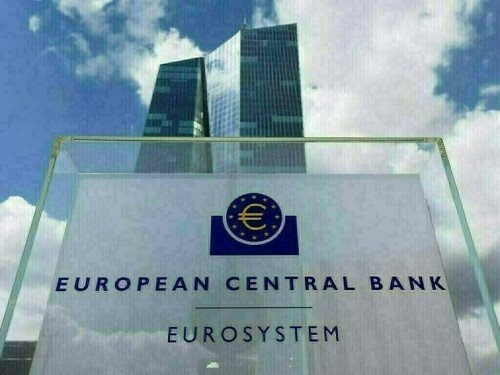ECB Reduces Interest Rates Amid Economic Pressures
FRANKFURT: In an effort to bolster the Eurozone economy, the European Central Bank (ECB) implemented its seventh interest rate cut in a year on Thursday. The move comes as the Eurozone faces increasing strain, partly due to trade tariffs imposed by U.S. President Donald Trump.
With post-pandemic inflation receding, the ECB has lowered borrowing costs to levels unseen since late 2022. Rapid shifts in trade policies have amplified concerns, leading to the rate reduction.
“The economic outlook faces noteworthy uncertainty,” ECB President Christine Lagarde stated during a press conference held after the governing council’s meeting in Frankfurt. Policymakers unanimously decided to decrease the ECB’s primary rate by 25 basis points, bringing it to 2.25%.
The ECB’s official statement cautioned that the present circumstances could negatively impact the Eurozone economy. However, the statement omitted a previous reference to interest rates being “restrictive,” which had been widely interpreted as a signal for additional future rate cuts.
Lagarde emphasized that the bank must maintain flexibility in its decision-making process due to the numerous uncertainties. “It necessitates adaptability in response to current developments,” she remarked. “More than ever, we need to prioritize data dependency.”
While President Trump has temporarily suspended the majority of tariffs, many remain in effect. Instability in financial markets has already exerted a negative impact on the economy.
Lagarde clarified that the ECB would not possess comprehensive clarity by its upcoming meeting in early June, as it precedes the conclusion of the 90-day suspension Trump imposed on tariffs, which were initially set at 20% for the European Union.
Concerns over Shadow Banks
The ECB has also issued warnings regarding financial risks originating from shadow banks.
Recent economic instability led a significant number of economists surveyed to anticipate Thursday’s cut in the ECB’s deposit rate to 2.25%. This figure represents the upper boundary of the 1.75%-2.25% range that the ECB has defined as “neutral,” indicating neither a stimulus nor a hindrance to economic activity.
Impact of Tariffs
Last month, Lagarde indicated that the ECB projected a potential 0.5% decrease in growth across the 20 Eurozone countries if the U.S. were to impose a 25% tariff on EU imports, followed by retaliatory measures from the bloc. This would effectively negate approximately half of the Eurozone’s projected expansion.
Nevertheless, this assessment is regarded as overly optimistic, especially if a trade conflict disrupts investor, business, and consumer sentiment.
While the ECB anticipated that a trade war would elevate inflation by 50 basis points, the disturbance stemming from unpredictable U.S. trade policy could also diminish it. In recent weeks, nearly all financial indicators affecting prices have undergone substantial changes.
“I am unable to confirm whether we have reached peak uncertainty,” Lagarde acknowledged on Thursday. “We must remain prepared for unforeseen events.”
Amidst the volatility, the euro has strengthened by 9% and is trading at a record high on a trade-weighted basis. Energy prices have declined significantly, growth is decelerating, and China, the primary target of U.S. tariffs, might divert some of its production to Europe.
Numerous investment banks have lowered their inflation forecasts for the Eurozone this year, frequently reducing them to or below the ECB’s 2% target.
“Disinflationary pressures are accumulating,” HSBC noted as it lowered its inflation forecasts to 1.9% for the current year and 1.8% for the following year.
Prior to the meeting, investors anticipated at least two additional rate cuts this year, with some even factoring in a third due to weakening growth.
Lagarde also addressed the euro’s significant appreciation, noting that it could exert downward pressure on inflation.



Comments (0)
No comments yet. Be the first to comment!
Leave a Comment